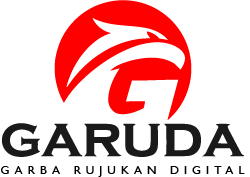THE ANALYSIS OF CODE MIXING USED BY AGNES MO ON DEDDY CORBUZIER’S PODCAST YOUTUBE CHANNEL
DOI:
https://doi.org/10.22460/eltin.v10i2.p151-166Keywords:
Type, Level, Code mixing, Podcast,Abstract
The objectives of the study are to find out the type of code mixing, the level of code mixing, and the dominant type of code mixing. This study employed content analysis which focused on the type of code mixing based on Hoffman’s theory and level of code mixing based on Suwito’s theory. The researcher found seventy-six data using inter-sentential code mixing and six data intra-lexical code mixing. The data was taken from Deddy Corbuzier’s podcast YouTube channel. The data were divided into Podcast Part I and Part II and were analyzed and documented for each Part using Hoffman’s and Suwito’s theory. The result showed that there were three forms of code mixings that found in the podcast, namely intra-sentential of code mixing, intra-lexical of code mixing and involving a change of pronunciation. In addition, it was also revealed that there are twenty-three data in word level, twenty-four data in phrase level, seven data in baster level, one data in idiom level and twenty-seven data in clause level based on Suwito’s theory. As the result, the most dominant type of code mixing is inter-sentetial code mixing type and the most dominant level of code mixing is code mixing in phrase level.References
REFERENCES
Chomsky, N. (1995). Language and nature. Mind, 104(413), 1-61 https://doi.org/10.1093/mind/104.413.1
Corbuzier Deddy. (n.d.-a). AGNEZ MO.. MANTAN KU TER... Deddy Corbuzier Podcast. https://www.youtube.com/watch?v=siuhSaNFhB4
Corbuzier Deddy. (n.d.-b). AGNEZ MO part 2 - HAMPIR NIKAH‼ï¸- Deddy Corbuzier Podcast. https://www.youtube.com/watch?v=9-fRulT2q3E
Corbin, J., & Strauss, A. (2008). Strategies for qualitative data analysis. Basics of Qualitative Research. Techniques and procedures for developing grounded theory, 3(10.4135), 9781452230153.
Emmorey, K., Borinstein, H. B., Thompson, R., & Gollan, T. H. (2008). Bimodal bilingualism. Bilingualism, 11(1). https://doi.org/10.1017/S1366728907003203
Hoffmann, C. (2014). Introduction to bilingualism. Routledge.
Kartini, D., Alfian, A., & Mukhlisa, D. (2019). Code Mixing Used By Sheryl Sheinafia’s Followers (Case Study Of Anak Jaksel Language Trend) (Doctoral dissertation, UIN SULTHAN THAHA SAIFUDDIN JAMBI).
Leedy, P. D., & Ormrod, J. E. (2019). Practical research: Planning and design. Pearson. One Lake Street, Upper Saddle River, New Jersey 07458.
Mackey, W. F. (1962). The description of bilingualism. Canadian Journal of Linguistics/Revue Canadienne de Linguistique, 7(2), 51–85. https://doi.org/10.1017/S0008413100019393
Moleong, L. J. (2010). Metodologi penelitian kualitatif (2010th ed.). Remaja Rosdakarya.
Myers-Scotton, C., & Jake, J. (2009). A universal model of code-switching and bilingual language processing and production. Cambridge University Press.
Rianda, D. (2017). Code switching and code mixing used by Boy William in Breakout Music Program at NET TV (Doctoral dissertation, IAIN Palangka Raya).
Sukrisna, A. (2019). An analysis of using code mixing on atta halilintar’s video youtube channel (Doctoral dissertation, UIN Raden Intan Lampung).
Suwito. (1996). Alih Kode, Campur Kode, Interferensi. Binary Offset.
Wardhaugh, R., & Fuller, J. M. (2015). An Introduction To Sociolinguistics - Seventh Edition.
Warschauer, M., Said, G. R. E., & Zohry, A. G. (2002). Language choice online: Globalization and identity in Egypt. Journal of Computer-Mediated Communication, 7(4), JCMC744.









